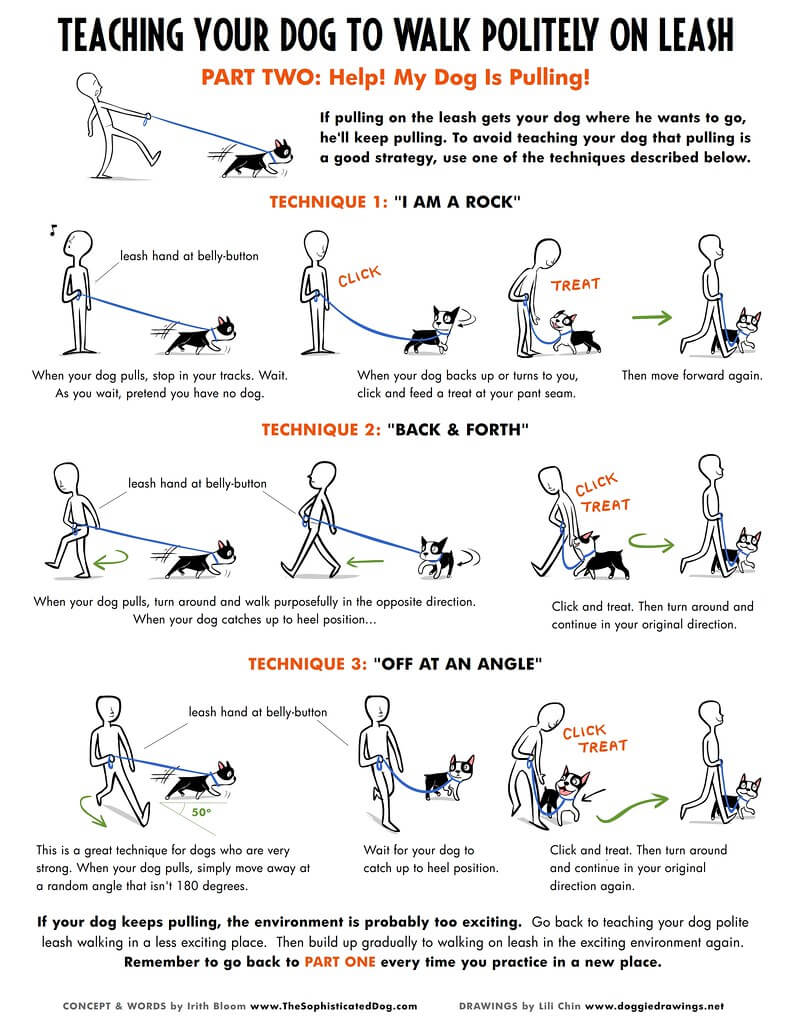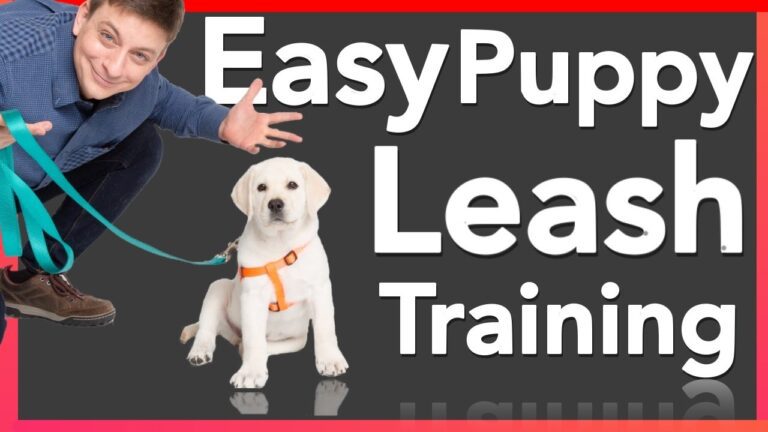To efficiently leash train your puppy, attach the leash to their harness and allow them to wear it while supervised, gradually getting them used to the feeling of the leash. You can also attach the leash to yourself and let the puppy follow you around the house.
Leash training is an essential skill for your puppy’s safety and peace of mind during walks. Teaching your puppy to walk on a leash without pulling can be challenging, but with patience and consistency, it can be easily accomplished.
This article will provide practical methods and tips to leash train your puppy, helping them become comfortable and obedient on walks. Whether starting with a new puppy or an older dog, these techniques are suitable for all ages and breeds. So, let’s delve into the step-by-step process of leash training and help you enjoy stress-free walks with your furry companion.

Methods And Tips For Leash Training Your Puppy
Leash training is an essential skill for every puppy owner. Not only does it provide exercise and mental stimulation for your furry friend, but it also ensures their safety when out and about. However, leash training can sometimes be a challenging process. Fear not! This article will provide practical methods and valuable tips to make leash training your puppy a breeze.
Start Early And Be Consistent
Starting leash training as early as possible is the key to success. Puppies have a natural inclination to explore and investigate their surroundings, so it’s essential to introduce them to walking on a leash from an early age. Consistency is also crucial in their training. Set a daily routine for leash walks and stick to it. This will help your puppy understand and anticipate when it’s time for their outdoor adventure.
Choose The Right Leash And Training Tools
When choosing a leash, it’s essential to consider the size and breed of your puppy. A lightweight, nylon leash is generally a good option for small or medium-sized dogs, while a stronger leash, such as a martingale or slip lead, may be more suitable for larger breeds. Training tools like a clicker or a treat pouch can also help reinforce positive behavior during leash training.
Introduce The Harness And Leash Gradually
Before taking your puppy for their first leash walk, gradually introduce them to the harness and leash. Allow them to wear the harness around the house and let them get used to the feeling of having something attached to their body. You can also attach the leash to yourself and let your puppy follow you, helping them understand that the leash is a source of fun and exploration.
Teach Basic Commands And Walking Etiquette
Basic commands such as “sit,” “stay,” and “heel” are essential for successful leash training. Take the time to teach your puppy these commands and practice them during your leash walks. It’s also important to teach your puppy proper walking etiquette, such as not pulling on the leash and walking calmly by your side. Consistently rewarding good behavior will help reinforce these essential skills.
Reward-based Training And Positive Reinforcement
Reward-based training is highly effective when it comes to leash training. Use treats, praise, and positive reinforcement to encourage desired behavior. Whenever your puppy walks calmly on the leash or follows basic commands, reward them immediately. This creates a positive association with leash training and motivates them to continue exhibiting the desired behavior.
Addressing Common Challenges
During leash training, you may encounter common challenges such as pulling, distractions, or fear. Addressing these challenges requires patience and consistency. Use gentle redirection techniques to guide your puppy back to your side when they start to pull, and gradually introduce them to different environments and distractions. Consult a professional trainer for guidance and support if your puppy shows signs of fear or anxiety.


Frequently Asked Questions On How To Easily Leash Train Your Puppy
How Do You Leash Train A Puppy Fast?
To leash train a puppy fast, attach the leash to their harness and let them wear it at home to get used to it. You can also attach the leash to yourself and let the puppy follow you. Start training them to walk on a loose lead by using rewards and stopping when they pull.
Avoid starting sentences with “when it comes” or “if you” and use active voice.
What Age Should You Start Leash Training a Puppy?
Start leash training a puppy as early as 8–10 weeks old to establish good habits.
How Long Does It Take A Puppy To Get Used To A Leash?
A puppy usually takes a month to get used to a leash. Start by letting them wear the harness and drag the leash at home. Then, attach the leash to yourself and let your puppy follow you around the house.
Be patient, as the teenage phase may bring some resistance to training.
How Do You Train A Puppy To Walk On A Leash Without Pulling?
To train a puppy to walk on a leash without pulling, attach the leash to their harness and let them wear it at home. Gradually, let them drag the leash around and get used to it. Then, attach the leash to yourself and let them follow you around the house.
When walking outside, if they pull, stop and call them towards you, rewarding them with something they like when they walk on a loose lead.
Conclusion
Finally, leash training your puppy doesn’t have to be daunting. Following the steps outlined in this blog post, you can easily teach your furry friend to walk on a leash. Remember to start early, use positive reinforcement, and be patient.
With consistent practice and lots of love, you’ll soon have a well-behaved pup who walks calmly by your side. Happy training!

